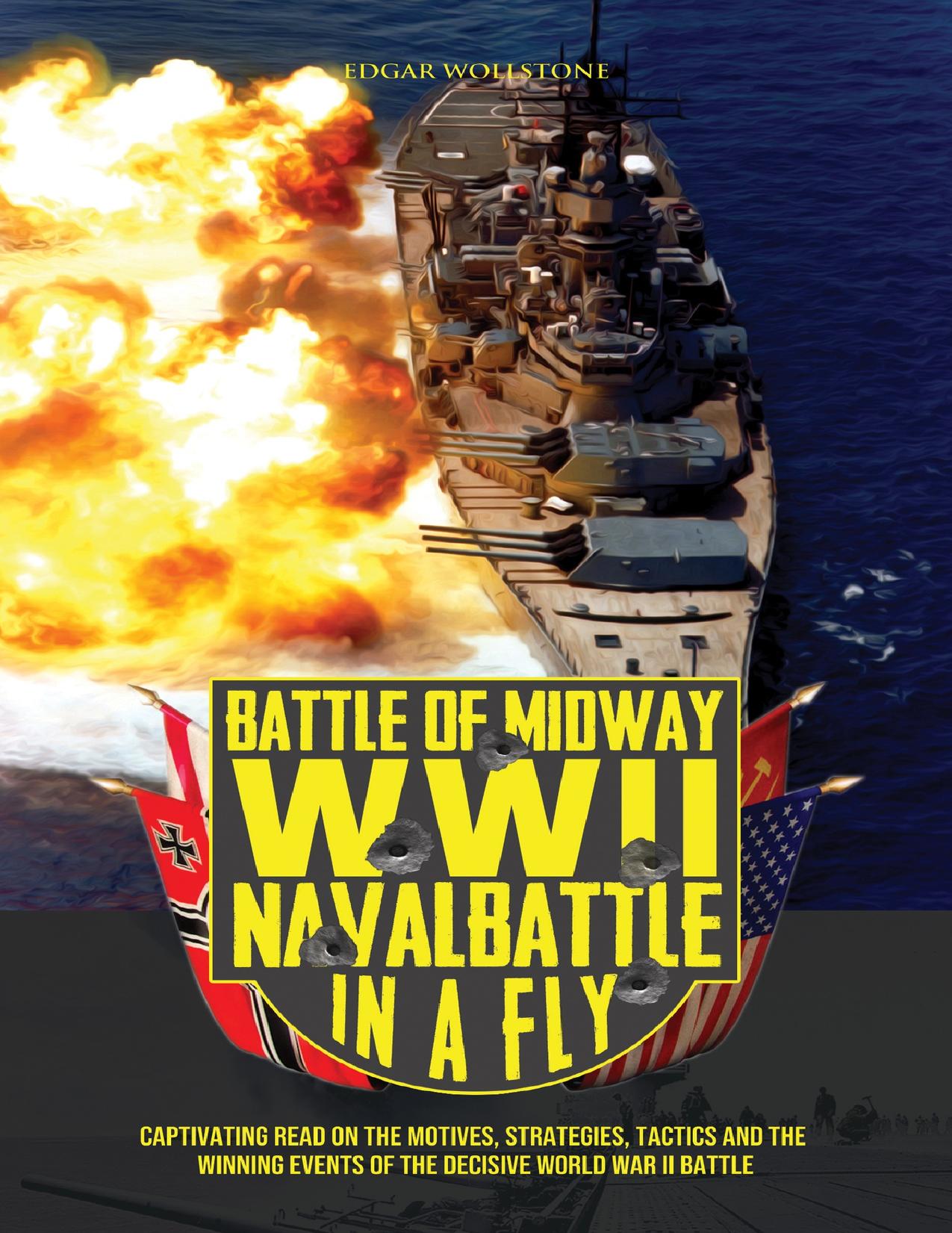Battle of Midway, WWII Naval Battle in a Fly: Captivating read on the Motives, Strategies, Tactics and the Winning Events of the decisive World War II Battle (War Classics In a Fly Book 3) by Wollstone Edgar

Author:Wollstone, Edgar [Wollstone, Edgar]
Language: eng
Format: epub, pdf
Published: 2020-09-25T00:00:00+00:00
America Attacks Japanese Fleet
The Americans launched a carrier aircraft attack against the Japanese. Frank Jack Fletcher fondly called as Black Jack by his peers, who also lead the fleet in the Coral Sea battle was aboard the Yorktown. In the Battle of Midway, Fletcher was commanding his Task Force 17, aboard a patched-up Yorktown, along with task Force 16 that was aboard Enterprise and Hornet. Task Force 16, usually manned by Vice Admiral William Halsey was apportioned to Fletcher owing to Halseyâs deteriorating health and was replaced by Rear Admiral Raymond A Spruance.
Fletcher commanded Spruance to launch an attack as soon as possible while he waited with his ducks in a row to attack in case any undetected Japanese carriers suddenly show up the coast. Though the US was at an advantage with the cryptanalysts at Station Hypo decoding Japanese message and PBYâs sighting had warned them in advance of an imminent attack by Japan, Fletcher was jittery and anxious by the lack of information about the location and whereabouts of the enemy carrier. This lack of intelligence lead Fletcher to direct Spruance to attack while the iron is still hot, and the first plane took off from carriers led by Spruance, Enterprise and Hornet a few minutes after 07:00. Fletcher, after a thorough scouting flight, followed suit at 08:00 Yorktown.
Fletcher along with the commanding officer of Yorktown, Captain Elliott Buckmaster, had acquired hands on experience in a full combat against an intimidating enemy force in the crucial battle of Coral Sea a month ago, but the team aboard Enterprise and Hornet who were allotted the task of first strike, though competent and brave were a bit wet behind the ears.
Spruance was of the opinion that taking the enemy by surprise with an attack was conducive than wasting precious minutes planning a coordinated attack, thus he ordered for strikes. While Japan was able to launch 108 aircraft in just a little over five minutes, it took Enterprise and Hornet an hour to launch 117.
Sure, a coordinated attack from America would have been a defying blow for Japan but Spruance decided to go with his plan of a piecemeal attack, while Japanâs tactics were always focused on constituted attacks. The uncoordinated, yet consistent attrition was a calculated risk that Spruance took because he pretty much had no other option, since engaging the Japanese in a ceaseless air combat was crucial in averting any counterattack by Japan. It was a gamble that would later prove to be worthwhile as written by Chester W. Nimitz.
To inflict sever damage on the enemy was the driving motto for a chafed America than a âdefensive strategyâ for the wounds of Pearl Harbor attack six months ago was still fresh and rasping.
The debut strike from Hornet missed target by 25 degrees but missed the Japanese carriers. Torpedo Squadron 8 (VT-8, aboard Hornet), broke formation from Ring and headed to the correct target location but 10 F4Fs from Hornet ran out of fuel. The VF-6 from Enterprise also ran out of fuel and had to return for refueling.
Download
Battle of Midway, WWII Naval Battle in a Fly: Captivating read on the Motives, Strategies, Tactics and the Winning Events of the decisive World War II Battle (War Classics In a Fly Book 3) by Wollstone Edgar.pdf
This site does not store any files on its server. We only index and link to content provided by other sites. Please contact the content providers to delete copyright contents if any and email us, we'll remove relevant links or contents immediately.
| Africa | Americas |
| Arctic & Antarctica | Asia |
| Australia & Oceania | Europe |
| Middle East | Russia |
| United States | World |
| Ancient Civilizations | Military |
| Historical Study & Educational Resources |
The Light of Days by Judy Batalion(1063)
First Platoon: A Story of Modern War in the Age of Identity Dominance by Annie Jacobsen(903)
Stalin's War: A New History of World War II by Sean McMeekin(861)
The Pacific War 1941-1943 by James Holland(803)
Walk in My Combat Boots by James Patterson(765)
The American War in Afghanistan by Carter Malkasian(743)
Victory's Price (Star Wars) by Alexander Freed(735)
The Vietnam War: An Intimate History by Geoffrey C. Ward & Ken Burns(721)
Blood and Ruins: The Great Imperial War, 1931-1945 by Richard Overy(686)
Operation Pedestal by Max Hastings(683)
Concepts of Space by Jammer Max;(667)
Cold War (Alexander King Book 2) by Bradley Wright(661)
Extreme Fitness by Chris McNab(654)
The Madman Theory by Jim Sciutto(651)
Flying Tiger by Samson Jack(635)
World War II Infantry Fire Support Tactics by Gordon L. Rottman(612)
Pathfinders by AL-KHALILI JIM(611)
Panzerkrieg by Mike Syron(601)
Hitler’s Pre-Emptive War: The Battle for Norway, 1940 by Henrik O. Lunde(585)
